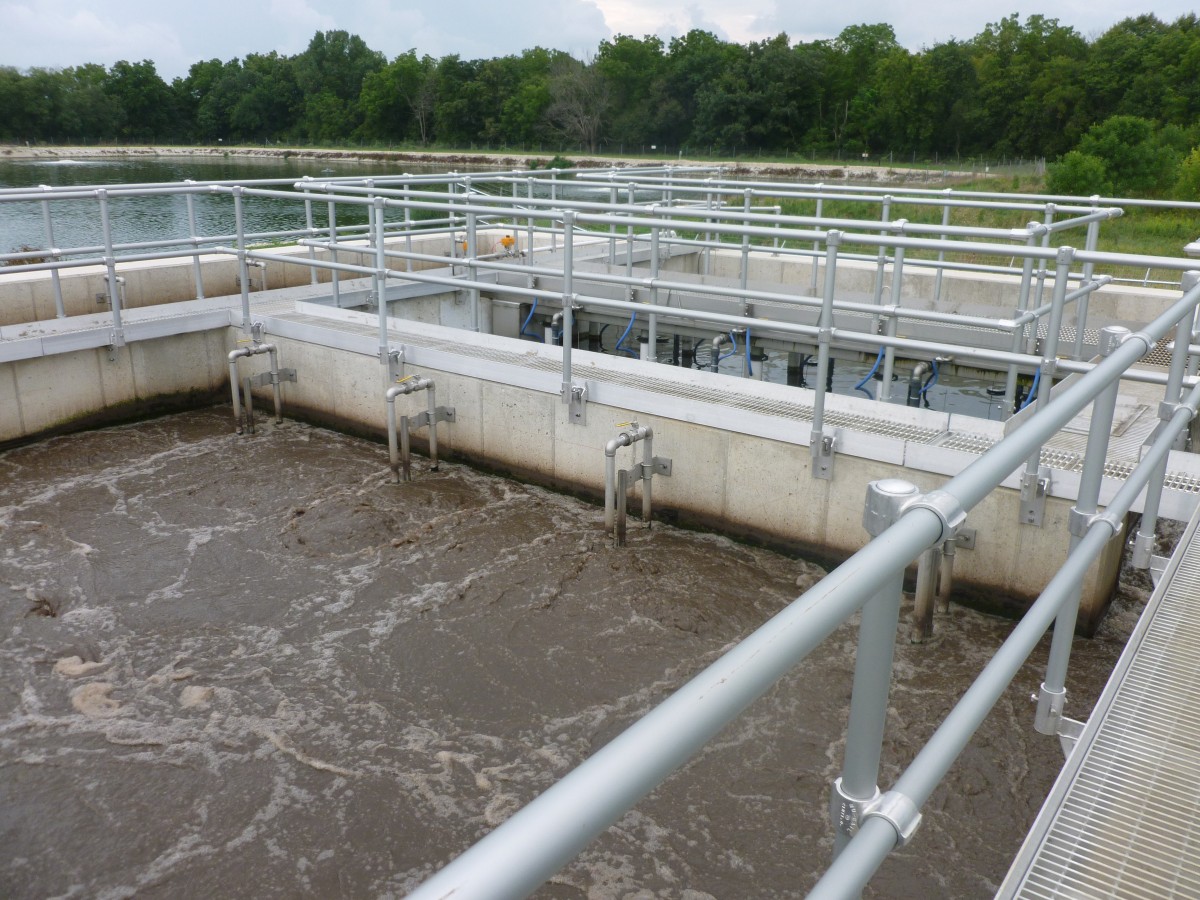Comparing wastewater aeration systems
Adding air directly to wastewater is considered a critical step in wastewater treatment because it facilitates the biodegradation of organic pollutants. However, this vital aeration process also consumes the most energy at wastewater treatment plants (WWTPs). Given that aerobic reactors in the secondary treatment activated sludge process account for nearly 60% of a WWTP's overall power consumption, selecting the right wastewater aeration system can help municipal leaders meet efficiency requirements and realize energy goals.
This blog post compares different wastewater aeration systems and describes why you need a team of wastewater engineers to help determine the most high-quality and effective aeration system for your local WWTP.
Types of wastewater aeration systems
The efficiency and performance of aeration systems are evaluated on the basis of oxygen transfer capacity. Because raw wastewater contains low levels of Dissolved Oxygen (DO) and because aerobic microorganisms require DO to break down waste, the treatment process adds oxygen to ensure the biological degradation of soluble organic material.
Aeration systems transfer oxygen from a gaseous state to liquid form for biological wastewater treatment. Most aeration systems are designed to maintain DO concentrations around 2 mg/L, which can be added by mechanically agitating the liquid wastewater surface (mechanical aeration) or by introducing oxygen to aeration tanks through porous devices (diffused aeration). The table below compares mechanical and diffused aeration systems based on their mechanical device, cost and efficacy and how easily each is operated and maintained.
| Comparison: mechanical vs. diffused aeration systems | ||
| Device configuration | Mechanical aeration | Diffused aeration |
| Horizontal operation uses rotating shafts and propeller beds. The strong churning motion of propellers allows localized wastewater mixing and oxygen transfer for aeration. | Vertical operation uses onshore blowers, pipes and diffusers. Wastewater is mixed throughout the tank to avoid dead zones. | |
| Cost | A simple design and easy installation result in low upfront and construction costs. | A complicated design and installation create higher upfront costs. |
| Efficacy | Localized wastewater mixing is extremely effective for shallow tanks. | Mounted at the base, diffused aerators ensure air reaches the bottom of deep tanks. |
| Portability | Mechanical aerators can be easily detached from their moorings and reattached elsewhere. | Diffusers are fixed in place and are not portable. |
| Maintenance and operation | Mechanical aerators have a motor attached to the aerator, so maintenance and repair must be performed outdoors. Mechanical aerators, especially those in lagoons, can have issues with freezing and rags wrapping around the impeller. Several mechanical components require regular maintenance, repairs and replacement, which increases operating costs. | Diffused aeration blowers are typically installed indoors, which offers a more comfortable setting for maintenance and repairs. Diffused aerators are cheaper than mechanical ones to operate long-term and have relatively fewer parts that require periodic maintenance. However, diffused systems can have problems with water leaking into air lines and blocking airflow. Membrane-type diffusers must also be replaced periodically. |
| Types |
|
|
Diffused aeration is common in activated sludge mechanical treatment plants, and mechanical aeration is more frequently found in aerated lagoons. Oxidation ditches, a type of activated sludge WWTP, require mixers to keep wastewater moving and ensure a continuous flow around the ditch. Using mechanical aerators that provide oxygen and mixing can eliminate the need for blowers, air piping and diffusers. Oxidation ditches are one type of activated sludge treatment in which mechanical aerators can be as efficient as diffusers. However, diffused aeration is typically more efficient for conventional aeration tanks.
Selecting a wastewater aeration system depends on several factors, including:
| • Volume of wastewater. | • Composition of wastewater. |
| • Local conditions. | • Capital cost. |
| • Efficiency requirements. | • Maintenance. |
| • Tank or lagoon size. | • Energy goals. |
A team of dedicated and experienced wastewater engineers can help municipal leaders evaluate these factors and choose the most effective and energy-efficient aeration system for local WWTPs.
How Fehr Graham can help determine the right wastewater aeration system for your local WWTP
At Fehr Graham, we have helped communities improve WWTP efficiency and minimize negative environmental effects for the last half-century. Our team of wastewater engineers designs effective solutions, including retrofitting and upgrading publicly owned treatment plants with efficient aeration systems. Some of our past projects include:
- Improvements at the Waukon Wastewater Treatment Plant. Upgrades at the Iowa City's Wastewater Treatment Plant included a new oxidation ditch activated sludge facility, new screening, grit removal and ultraviolet disinfection. Plant structures were converted to aerobic digesters. All upgrades addressed the permit limits and issues of high industrial loading.
- Upgrades at the Brandon Wastewater Treatment Plant. Several improvements helped update the City's lagoon cells, including removing sludge and liners and installing blowers and a diffused aeration system. Renovating the plant's infrastructure helped save significant money.
Our team helps with planning and construction and guides communities and municipalities to secure funds for WWTP upgrades.
To learn more about wastewater aeration systems and select the right one for your community, contact us or give us a call at 563.927.2060.
 |
Lucas Elsbernd, a Professional Engineer and Senior Project Manager, finds innovative solutions to challenging water and wastewater projects. He manages municipal, commercial and industrial planning and design projects in the water resources environment. He fosters a positive client experience and collaborates with leaders throughout the firm on project pursuits and technical issues. Lucas is one of the firm’s water and wastewater experts. He has a strong technical knowledge of water and wastewater treatment design and construction engineering. Contact him at |
Collaborative, Insightful, Results-Driven Solutions
Fehr Graham provides innovative engineering and environmental solutions to help improve the lives and communities of our customers.

